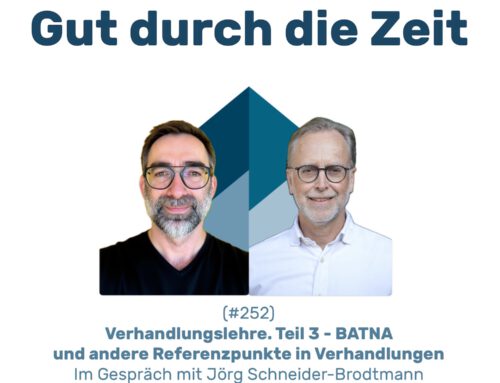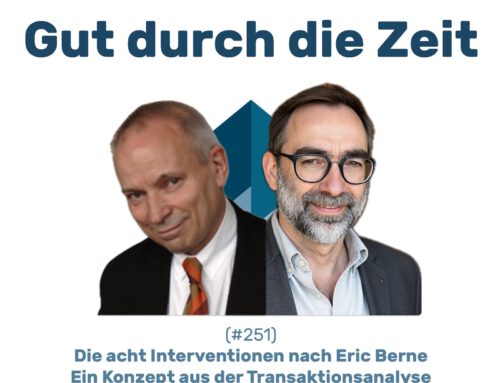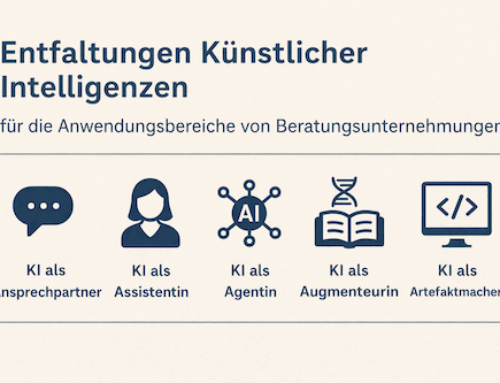Contact offers for mediation services
Marketing measures by mediators to increase their visibility and successfully acquire new clients.
An overview
Overview:
1. own website - Your digital hub
2. the blog - Share expertise and become visible
3. podcasts - Straight to the ears and right into the heart
4. social media - Professional only, please!
5. community platforms and specialised articles - He who writes, stays.
6. email marketing - The direct line to your clients
7. cold calling - In your face
8. recommendations and testimonials - Nothing beats credible recommendations!
9. technical articles and expert contributions - Seriousness at its best.
10. lectures, possibly also workshops You will be listened to here!
11. online advertising and adverts - Why is Google so rich? Why.
12. traditional advertising and sponsorship For those who have money to spare.
13. existing customer care - Why wander into the distance...
14. physical advertising materials - Quality before quantity
15 Christmas cards and personal gestures - but sparingly
3. podcasts – straight to your ears and right into your heart
Possibilities: Podcasts are a great way to build a personal connection with potential clients and increase your reach. You can talk about different aspects of mediation, conduct interviews with experts and provide your listeners with practical examples and tips. Podcasts are niche products, but the listeners who want to hear you want a direct line to you. It is therefore also permitted and encouraged to talk about the idiosyncrasies of your business, the special people in your environment, etc.
Examples:
- Thematic seriesSeries and seasons on special topics such as family mediation, business mediation or conflict management in everyday life.
- Interview sequencesDiscussions with other mediators, lawyers or psychologists.
- Listener questionsAnswering questions that listeners send you.
Recommendations for practice:
- Professional technologyInvest in good recording equipment for high sound quality.
- Clear editorial planPlan your episodes in advance and stick to a fixed publication rhythm.
- AuthenticityBe authentic and personal in your recordings to build a connection with your listeners.
- Key idea: What do you as a listener want from a good podcast? Put it into practice!
Risks:
- Time requiredPodcasts are time-consuming to produce. Think carefully about whether you have the resources for it, or better still: free them up!
- ContinuityA podcast that appears irregularly or suddenly cancels is a disappointment!
4. social media – Professional only, please!
PossibilitiesSocial media platforms such as LinkedIn, Facebook and Instagram offer excellent opportunities to position yourself as an expert and get in touch with potential clients. LinkedIn in particular is important in a professional context. Here you can show expertise, objectivity, personality and decisiveness. And much more besides.
Examples:
- LinkedIn profiles: Detailed profiles presenting your experiences, recommendations and successes.
- Facebook pageRegular updates on your activities, events and new blog posts.
- Instagram posts: Visual insights into your work, quotes and short tips on conflict resolution.
Recommendations for practice:
- Consistency: Make sure that your posts appear regularly and fit together. In terms of content, but also visually. Instagram in particular is increasingly(?) focussing on ensuring that the posts present an attractive overall appearance.
- InteractionResponds to comments and messages to build an active community.
- Content strategyDevelop a strategy for what content you want to publish, when and how.
Risks:
- OverloadPlaying too many platforms at the same time can quickly become overwhelming. Choose the platform that suits your goals. The keyword Secondary utilisation must not go unmentioned here!
- Unprofessional contentMake sure that all content is professional and relevant in order to maintain and build your credibility. This is also possible with private content, but you must at least have (and communicate) an idea of the extent to which this content contributes to your professionalism in the context of your communication strategy.
For example, years ago I used my love of long-distance hiking to give my ideas on mediation and conflict a narrative framework that allowed me to present these ideas more clearly and concisely. And who knows, maybe that has brought one or two clients or turned them off. No risk, no fun.
5. community platforms and specialised articles – He who writes, stays.
Possibilities: Texts and articles on community platforms such as Medium.com or specialised networks, including in trade journals, can increase your reach and demonstrate your expertise. This is the only way for many people to find out how you understand your work, what ideas you have and what can be expected of you. These platforms often have a wide reach and offer a lasting, meaningful opportunity to create points of contact.
Examples:
- Medium articleSpecialist articles on current topics in mediation and conflict counselling, mainly in non-mediation journals, but perhaps in the so-called Pensioner-Bravo a.k.a. „Apotheken-Rundschau“.
- Specialist networksPublications in networks that specialise in your target group.
- Guest article: Posts on blogs and websites by colleagues or other experts.
Recommendations for practice:
- Choice of topicChoose topics that interest your target group and to which you can demonstrate your expertise and consulting experience.
- Co-operationsCollaborate with other professionals to increase your reach.
- Quality before quantityMake sure that your articles are well researched and professionally written. They must offer added value for clients.
Risks:
- Time requiredWriting and publishing articles can be very time-consuming.
- Competitive pressure: In busy networks, it can be difficult to stand out from the crowd.
6. email marketing – The direct line to your clients
Possibilities: Newsletters are an effective way to stay in regular contact with your clients and inform them about news, offers and exciting content. Anyone who has been able to build up reach here and achieve open and click rates above 20% and around 5% can consider themselves lucky and have a simple but effective marketing tool at their disposal. Still the ultimate for many marketers.
Examples:
- Monthly newsletterUpdates on new blog posts, podcasts and events or directly – exclusive news for subscribers! But beware, what is labelled exclusive should be and remain so!
- Special offersExclusive offers or free webinars for your subscribers.
- Educational contentTips and instructions for conflict resolution that can be put directly into practice.
Recommendations for practice:
- SegmentationDivide your subscribers into different groups to send targeted content.
- PersonalisationAddress your subscribers personally and offer them customised content.
- Offer added valueEnsures that every newsletter offers real added value and is not just perceived as advertising.
Risks:
- Spam dangerMake sure that your newsletters are not perceived as spam. This can be avoided through high-quality content and compliance with data protection regulations.
- CancellationsBe prepared for cancellations and don't take them personally. Use the feedback to improve your content.
7. cold calling – In your face
Possibilities: Cold calling, e.g. by telephone (and no longer at the front door!!!) remains a personal challenge. Nevertheless, it can be a) effective, but above all b) intensive! You won't forget so quickly. I promise. Is that what you want? Then go‘! There is no more direct contact and certainly not with the possibility of reacting immediately, changing topics and gaining access in new ways.
The first call is to obtain permission to send further information by email. The work here consists of obtaining the appropriate telephone numbers (legally!), phoning the right and sometimes responsible persons and not being discouraged. The price is only courage, which is then the reward, no matter what the outcome. There are also two or three positive side effects. You certainly learn what, if it exists, is the convincing thing about your product and what the product actually is, the process, yourself or whatever. Nowhere else will you receive better, i.e. more effective, more usable feedback than in cold calling. My recommendation: Do it!
Examples:
- Pick out your sectors, the relevant organisations (hospitals, care facilities, universities, industrial companies, etc.) and call systematically. Create a schedule for the calls and topics, as well as for the conversation itself. Routinise your calls!
- Find the mediators for your potential clients – and call them (see above); e.g. family lawyers for separation support; inheritance lawyers for support work; neighbourhood and allotment garden associations, sports clubs, school clubs etc… Here it is important to make a concrete selection.
Recommendations for practice:
- Prepare wellBe well prepared for the interviews and have all the important information ready.
- Use CRM systemUse a CRM system to keep track of your contacts and their status.
- Courtesy and respectAlways treat contacts politely and respectfully. A friendly and professional tone is crucial.
Risks:
- Rejection: Expect rejection and still remain friendly and professional.
- Time requiredCold calling is time-consuming and can be frustrating if you are not successful.
8. recommendations and testimonials – Nothing beats credible recommendations!
Possibilities: Recommendations from satisfied clients are worth their weight in gold. They enjoy a high level of trust and can often be the deciding factor. This applies both to personal recommendations („You need mediation with Sascha, he's just the right person!“) and to a digital star rating of your services. Take care of it! Claim them! I wanted to take over mediations, just for that!
Examples:
- Testimonials on the website: Publish positive feedback on your website.
- LinkedIn recommendationsAsk satisfied clients for recommendations on LinkedIn.
- Google reviewsAsk your clients to leave positive reviews on Google.
Recommendations for practice:
- Request active: Actively asks for recommendations and feedback.
- Use referencesUse the positive feedback in your marketing material.
- Show gratitudeThank the clients who give you recommendations.
Risks:
- False promisesDo not make exaggerated promises in order to obtain recommendations. Authenticity is crucial here.
- Negative feedbackBe prepared for negative feedback and use it to improve yourself.
9. technical articles and expert contributions – Seriousness at its best.
Possibilities: Publishing specialised articles in renowned journals and magazines can significantly increase your visibility and credibility. However, it is important to bear in mind that this is not just a marketing measure, but also a personal development programme and professional reflection on your own knowledge and understanding. Practice can only be fully understood through teaching and vice versa.
Those who combine teaching, science and practice do not waste their valuable time in any way, not even from a marketing point of view.
This is one of the reasons why we at INKOVEMA combine precisely these three levels in our work.
Examples:
- Articles in specialised journalsPublish articles in magazines that are read by your target group. Or publish in your trade journals (ZKM, pm, KonfliktDynamik etc.) and make sure that your customers know about it. A nice addition in an e-mail (for cold calling?)
- Guest contributionsWrite guest articles for well-known blogs and websites in your area of expertise.
Recommendations for practice:
- Research well: Make sure your articles are well researched and substantiated.
- Relevant topicsChoose topics that are of interest to your target group and emphasise your expertise.
- Co-operationsWork with editors and other experts to increase your reach.
Risks:
- Time requiredWriting and publishing specialised articles is time-consuming and requires careful planning and methodical work.
- RejectionBe prepared for the fact that not all articles will be accepted. Use rejections as an opportunity for improvement.
10. lectures, possibly also workshops – You will be listened to here!
Possibilities: Presentations at specialist congresses, network meetings or workshops are an excellent opportunity to showcase your knowledge and make new contacts. It doesn't necessarily have to be a large congress, the regular table of dental specialists or the HR breakfast around the corner is enough; it can be the Xing women's network that organises career get-togethers or the popular Fuck-up Nights. Look for an audience!
Examples:
- Specialist lecturesGive presentations at congresses and conferences on your specialised topics.
- Fuck-up nights: Present your failures and mistakes.
Recommendations for practice:
- Good preparationPrepare your presentations and workshops carefully and make them appealing. Pay attention to recognition effects!
- Promote interactionInvolve your audience actively and encourage interaction.
- Obtain feedbackUse the participants' feedback to improve your presentations.
Risks:
- Stage frightMany people are afraid of public speaking. Practise regularly to become more confident!
- CostsParticipation in congresses and the organisation of workshops can be associated with high costs.





Leave A Comment